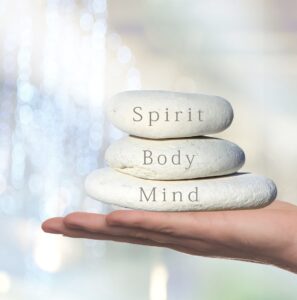This fast-paced world is full of stress and imbalance. Finding inner peace is a must for many. That’s where wellness therapy comes in! Ancient practices and modern science combine to nurture our physical, mental, and emotional health.
Mindfulness, meditation, yoga, aromatherapy, and more are tailored to our needs. It also empowers us to take charge of our own well-being. With guided sessions and nutrition guidance, we can maintain balance.
Nurturing inner balance brings many benefits. Clarity of mind, improved relationships, and life satisfaction are just a few. Self-care through wellness therapy unlocks our full potential and creates a ripple effect.
Don’t miss out! Unlock profound joy with holistic well-being. Start your journey today!
Understanding Wellness Therapy
Wellness therapy is a unique method for achieving wellbeing and inner harmony. It blends together various strategies and practices to improve physical, mental, and emotional health.
- 1. It concentrates on prevention, rather than treatment. Exercise, nutrition, stress management, and self-care are essential for a healthy lifestyle.
- 2. It acknowledges the mind-body bond and aims to enhance both mental and physical health. Popular techniques such as meditation, yoga, mindfulness, and relaxation exercises are regularly used.
- Lastly, wellness therapy encourages individuals to be involved in their own wellbeing. It provides tools and resources to help them make positive modifications to their lives.
In addition, it considers the individual’s specific needs and preferences. Understanding that what works for one person may not be effective for another, it provides a personalized approach that fits each person’s goals and situation.
Additionally, the history of wellness therapy goes back centuries. Ancient societies understood the importance of holistic healing practices and integrated them into their daily routine. For instance, traditional Chinese medicine has used methods such as acupuncture and herbal remedies to restore balance in the body.
The Importance of Inner Balance
Inner balance is key for overall well-being. It allows us to tackle life’s difficulties with strength and poise. Without it, we can feel lost and cut off from ourselves and others.
When our mind, body, and soul are in sync, we experience a sense of contentment. Inner balance brings self-awareness, helping us identify our needs and act accordingly. It also helps us make smart decisions, set strong boundaries, and foster positive relationships.
Plus, inner balance is essential for managing stress. When out of balance, stress can lead to health problems such as anxiety, high blood pressure, and digestion issues. We can reduce stress levels and promote health by nurturing our inner balance with activities like meditation or mindfulness.
A great representation of the importance of inner balance is Ayurveda. This ancient Indian practice, over 5000 years old, believes that keeping equilibrium within oneself is necessary for good health. It recognizes the interconnectedness of mind, body, and spirit and emphasizes the need to balance doshas.
Techniques for Nurturing Your Inner Balance
Caring for your inner harmony is essential for overall wellness. Here are some techniques to nurture it:
- Mindfulness meditation is one of them. It involves focusing on the moment and observing thoughts without judging. This calms the mind and brings peace.
- Practicing gratitude is also helpful. Expressing thankfulness for things in life shifts focus to positivity and contentment.
- Physical exercise is good for both physical and mental health. It releases endorphins, ‘feel-good’ hormones, promoting a positive attitude and reducing stress.
- Spending time in nature nourishes inner balance. Walks in nature and sitting in a park bring beauty and serenity, calming the mind and body.
- Creative activities such as painting, writing, or playing an instrument offer self-expression and emotional balance. This taps into creativity and brings joy.
These suggestions work because they encourage mindfulness, positivity, physical wellbeing, connection with nature, and self-expression – all necessary for inner balance.
Integrating Wellness Therapy into Daily Life
Incorporating wellness therapy into your life means bringing in practices that foster inner balance. This can yield better physical and mental health. Consider these 4 points when integrating wellness therapy into your daily routine:
- Mindfulness: Use meditating or deep breathing exercises to heighten your awareness and be in the present. This reduces stress and improves well-being.
- Physical Activity: Exercise regularly, either formally or by walking outdoors. This keeps your body and mind healthy and helps you let off steam and lift your spirits.
- Healthy Eating: Feed your body with nourishing food that gives it the necessary nutrients. Introduce a variety of fruits, veggies, grains, proteins, and fats into your meals for better wellness.
- Self-Care: Make time for activities that relax and refresh you. This can be taking a hot bath, reflecting or writing in a journal, enjoying hobbies, or simply allowing yourself to relax and recharge.
By including these wellness therapy habits in our lives, we can enhance our wellness and find equilibrium in this hectic world. Don’t miss out on the benefits of wellness therapy – start today and reap the rewards of a healthier mind, body, and soul. Invest in your well-being!
Conclusion
Living a balanced, meaningful life is key for overall wellness. Here, we looked at wellness therapy and how it encourages inner balance. To take care of our physical, mental and emotional health, we can use meditation, mindfulness, exercise, and healthy habits. It’s also wise to get professional help when needed, and develop a strong support system.
Plus, wellness therapy has many advantages in different areas of our lives. From better relationships to more success at work, and from greater happiness to contentment, nurturing our inner balance has big impacts. Taking the time to look after ourselves and prioritize our well-being leads to a happier life.
Remember, wellness therapy is not the same for everyone. Each individual’s journey to inner balance is unique, and requires effort and self-awareness. Through trial and error, we can find out what works best and adjust our approach accordingly.
It’s worth noting that wellness therapy has roots in ancient healing practices. Indigenous communities across the world have known about the importance of treating the whole person – body, mind, and spirit – for true health. Today’s wellness therapy builds on these foundations, while adding modern scientific research, to give comprehensive care for folks seeking inner balance.
Frequently Asked Questions
1. What is wellness therapy?
Wellness therapy is a holistic approach to promoting health and well-being, focusing on nurturing your inner balance through various therapeutic techniques, such as mindfulness, meditation, and counseling.
2. How does wellness therapy benefit me?
Wellness therapy benefits you by promoting emotional, mental, and physical well-being. It helps in reducing stress, improving self-awareness, managing anxiety and depression, enhancing relationships, and fostering overall life satisfaction.
3. What can I expect during a wellness therapy session?
During a wellness therapy session, you can expect a safe and non-judgmental space to explore your thoughts, emotions, and challenges. The therapist may guide you through relaxation techniques, provide counseling, or introduce mindfulness exercises tailored to your needs.
4. Is wellness therapy suitable for everyone?
Yes, wellness therapy is suitable for everyone, regardless of age, gender, or background. It can benefit individuals coping with stress, anxiety, depression, relationship issues, or those simply seeking personal growth and a balanced lifestyle.
5. How many wellness therapy sessions do I need?
The number of wellness therapy sessions required varies for each individual and their specific needs. It is recommended to discuss this with your therapist, who can guide you based on your goals and progress.
6. How do I find a qualified wellness therapist?
To find a qualified wellness therapist, you can seek recommendations from your primary healthcare provider, friends, or family. You can also search online directories or consult professional associations related to wellness therapy for a list of accredited practitioners.



